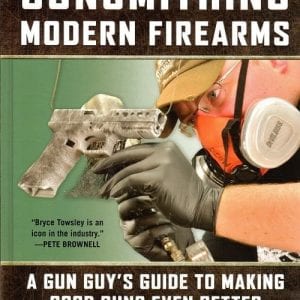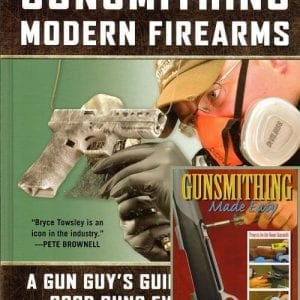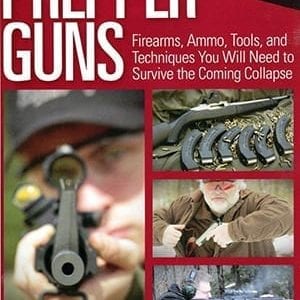Back when the earth was flat and my hair was still dark, I was slipping along through an old abandoned apple orchard in Vermont’s Taconic Mountains when a deer suddenly appeared like an apparition out of the morning fog. I drew the long barreled .44 Magnum from its holster, cocked the hammer and, holding the gun in a classic two hand, “Weaver Stance,” I caressed the trigger I had spent hours tuning. The gun shattered the quiet morning and when everything came back into focus the deer was gone. I approached slowly and ready to shoot again, but the buck was lying a few feet down the trail with a large hole through both lungs. As deer go it wasn’t much of a deer, but it was significant to me as it was my first with a handgun.

This 10-1/2 inch Ruger Super Blackhawk in .44 Magnum was used to take my first whitetail with a handgun. I won this gun in an IHMSA match back in the early days of the sport.
In the far too many years that followed, a lot more deer have fallen to my handguns. Also a few bears, some antelope, uncountable hogs, a few turkeys and a truckload of other game.
I have also competed with handguns in one form or another and off and on for nearly forty years. In the course of all this I have picked up an idea or two about how to make it all work.
Triggers
The foundation of any good shooting is the trigger and this is never more important than when shooting handguns. Every trigger-induced error that can influence a rifle will appear in handgun shooting times ten. With a rifle, there is the mass of the rifle as well as the fact that it’s anchored firmly against your shoulder to help to mask gun movement induced by a shooter struggling with a poor trigger. A handgun, on the other hand, will weigh about half as much as a rifle and will be waving out there at the end of your arms with little to support it or offer forgiveness for sloppy shooting technique. Handguns can be just as accurate as rifles, but shooting them equally well is another thing altogether.
If you do not have a good trigger, you will never master shooting your handgun. It’s the foundation of everything to follow and is probably the single most neglected aspect of handgun hunting.
The trigger on a hunting gun should break at three pounds, give or take. It should be clean and crisp with no creep and no “hitches” or hesitation in the trigger pull. It also helps to have no over-travel after the trigger breaks.
Triggers are tricky critters, so it’s always best to take the pistol to a gunsmith who knows what he is doing and have the trigger adjusted and polished until it is perfect.

Ken French with a nice buck taken with the .300 Whisper long before it was claimed as the .300 ACC Blackout.
Triggers
The late Hal Swiggett was one of the most recognized handgun hunters ever and he once told me, “God gave you two eyes and two hands, use them all when you are shooting your handgun.” He was a strong advocate of keeping both eyes open when shooting. However, that’s never been easy for me. Depending on the sights, the light, the target and the circumstances, I tend to drift back and forth between keeping both eyes open and squinting my right eye (I am left handed) when shooting handguns. However, I always subscribe to using two hands when shooting a hunting handgun.
The technique is simple and it uses opposing forces to help steady the gun. Wrap your off hand around your shooting hand, then push forward with your shooting hand and pull back with your off hand. Not so hard that you are straining, but enough to create some tension, which will help to steady the handgun.
Always use a rest when possible. Find a natural rest or, if nothing else, sit down and wrap your arms around your knees. Use the “push/pull” as well as adding tension between your arms and your legs to help steady the gun.
Never rest the barrel on anything, as that will make your shot go high.
Practice
Nobody is a good handgun shot without practicing. Make it a point to practice every day. Shoot a little if you can, but if you cannot, practice dry firing. Concentrate on breaking the trigger cleanly enough that the sights do not move from the target when the hammer falls.
Dry firing is important, but nothing can substitute for burning powder, so make sure that by hunting season you have sent a bunch of lead through your barrel. This builds muscle memory with the gun so that when the appearance of a big buck sends your brain into gridlock, your subconscious will take over and know what to do.
My competition shooting buddy Patrick Kelley said it best and it applies to hunting as well as competition shooting.
“The best accessory you can buy for your pistol is ammo. The only way to become a good shot is to practice.”








